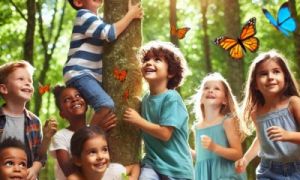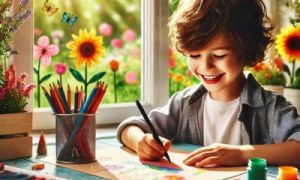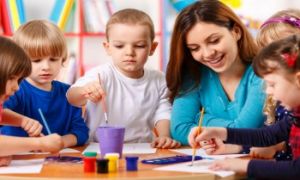

A: You can show individual learning cycles in a simplified way by using visual templates and structured documentation that align with the EYLF. These tools help educators track each child’s progress without overwhelming complexity. Here are a few effective strategies.
Here’s a streamlined set of weekly reflection questions designed for educators to use quickly—whether during team check-ins, solo journaling, or embedded in documentation cycles. They’re emotionally intelligent, trauma-informed, and adaptable across age groups and settings.
The following is a cheat sheet for Quality Area 3: Physical Environment. This quality area is designed to support educators in creating safe, inclusive, and engaging spaces that nurture well-being and learning. This version emphasizes design principles, sustainability, and trauma-informed spatial choices, with cues for induction, audit prep, and daily reflection.
The following is a cheat sheet for Quality Area 2. Quality Area 2 of the National Quality Standard (NQS) is the heartbeat of safe, responsive, and nurturing early childhood environments. It affirms that every child has the right to feel safe, be healthy, and thrive—physically, emotionally, and developmentally.
Quality Area 3 of the National Quality Standard (NQS) focuses on the physical environment—its design, safety, inclusivity, and how it supports children’s learning, wellbeing, and agency. Here’s a breakdown of practical, workplace-ready examples tailored to your advocacy and leadership lens.
The following is a concise yet powerful cheat sheet for Quality Area 1: Educational Program and Practice, tailored for your advocacy and sector leadership lens. This distills the core elements, documentation strategies, and reflective prompts to support both compliance and authentic pedagogy.
Safe language in documentation is more than just avoiding sensitive disclosures—it’s about writing in a way that protects children’s dignity, fosters trust with families, and upholds the professional integrity of educators. Here’s a guide to help you embed safe, respectful, and pedagogically sound language into your group and individual observations.
Writing a group observation in early childhood education is both an art and a strategic tool—it captures collective learning while honoring individual voices. Here's a guide to help you craft meaningful, pedagogically sound group observations that align with the planning cycle and resonate with families and educators alike.
A: In early childhood education, group goals serve as a powerful tool to foster shared learning experiences, strengthen peer relationships, and guide intentional teaching. Whether you're supporting social-emotional development, embedding EYLF outcomes, or responding to emerging interests, integrating group goals into your program helps create a cohesive, responsive learning environment.
This guide explores practical strategies for embedding group goals into your curriculum planning, linking them to outcomes, and evaluating their impact—ensuring your documentation reflects both educator intent and children's evolving capabilities.
The Connection Schema is a cognitive play pattern where children explore how things join, fasten, and separate.
 As an Educator in Australia, your pay rate falls under the Children’s Services Award 2010. This award states the minimum amount that an employer can… Read More
As an Educator in Australia, your pay rate falls under the Children’s Services Award 2010. This award states the minimum amount that an employer can… Read More
 When working as a qualified Early Childhood Teacher (with a university degree) within a service, your rate of pay will come from the Educational Services… Read More
When working as a qualified Early Childhood Teacher (with a university degree) within a service, your rate of pay will come from the Educational Services… Read More
 When working as a Diploma Qualified Educator your pay rate is from the Children's Services Award 2010. This Award states your minimum rate of pay… Read More
When working as a Diploma Qualified Educator your pay rate is from the Children's Services Award 2010. This Award states your minimum rate of pay… Read More
 When working as a Cert 3 Qualified Educator, your pay rate is from the Children's Services Award 2010. This Award states your minimum rate of… Read More
When working as a Cert 3 Qualified Educator, your pay rate is from the Children's Services Award 2010. This Award states your minimum rate of… Read More
 Educational Leaders play a crucial role in their early childhood service by ensuring that the educational program aligns with best practices and supports the holistic… Read More
Educational Leaders play a crucial role in their early childhood service by ensuring that the educational program aligns with best practices and supports the holistic… Read More
 In early childhood education and care, ratios are more than a technicality—they are a frontline safeguard. Every child deserves responsive supervision, emotional connection, and developmental… Read More
In early childhood education and care, ratios are more than a technicality—they are a frontline safeguard. Every child deserves responsive supervision, emotional connection, and developmental… Read More
 With the new national child safety reforms kicking in on 1 September 2025, early childhood services like yours have a real opportunity to lead the… Read More
With the new national child safety reforms kicking in on 1 September 2025, early childhood services like yours have a real opportunity to lead the… Read More
 Here’s a comprehensive Mobile Phone and Smart Watch Policy tailored for early childhood education and care (ECEC) services in Australia, aligned with the latest 2025… Read More
Here’s a comprehensive Mobile Phone and Smart Watch Policy tailored for early childhood education and care (ECEC) services in Australia, aligned with the latest 2025… Read More
 The Sea of Fish Challenge is a national initiative that invites children, educators, families, and communities to create and display fish artworks as a symbol… Read More
The Sea of Fish Challenge is a national initiative that invites children, educators, families, and communities to create and display fish artworks as a symbol… Read More
 Emotional awareness and self-regulation are crucial skills for young children, helping them navigate social interactions, manage their feelings, and develop resilience. The following article provides… Read More
Emotional awareness and self-regulation are crucial skills for young children, helping them navigate social interactions, manage their feelings, and develop resilience. The following article provides… Read More

The Education and Care Services National Law and National Regulations prescribe requirements for children participating...
See more...
Multimodal representations in early childhood education involve using multiple modes of communication, such as writing...
See more...
According to EYLF, scaffolding comprises of the educators’ decisions and actions that build on children’s...
See more...© 2009-2025 Aussie Childcare Network Pty Ltd. All Rights Reserved.

